Seokjeonangmu (Seokjeondaeje) (석전악무)
12.1Km 2016-09-05
53, Myeongnyun3-ga, Jongno-gu, Seoul-si
• Centre d'appels 1330 : +82-2-1330 (coréen, anglais, japonais, chinois) • For more info: +82-2-760-1472
Le Seokjeondaeje est une cérémonie à la mémoire de Confucius qui a évolué au fil du temps à Sungkyunkwan, la plus haute institution éducative de la fin de la dynastie Goryeo et de la dynastie Joseon. Cette cérémonie commémorative a été désignée Important bien culturel immatériel n° 85.
La version actuelle simplifiée du Seokjeondaeje s’appelle le « Seokjeonangmu ». La cérémonie contient de nombreux éléments fondamentaux du Seokjeondaeje. C’est un rituel traditionnel du Munmyo (sanctuaire de Confucius) qui rend hommage aux grands lettrés confucéens, de même qu’au philosophe chinois Confucius. Le cérémonial décrit le principe confucéen du « Ye » entre le professeur et l’étudiant au moyen de la musique et de la danse.
Le Seokjeondaeje / Seokjeonangmu est composé de plusieurs spectacles, incluant le « Taepungmu » (Bien culturel immatériel national n° 92), le « Cheonjiui Sori » (le son de la terre et du ciel) et le « Hangmun » (apprentissage). Le « Hangmun » dépeint la manière dont les habitudes savantes établissent le « Ye » (standards éthiques du confucianisme), et comment la bonne musique complète un solide apprentissage, qui mène finalement à un monde en paix.
Le Munmyoilmu est un spectacle de danse rendant hommage aux grands professeurs qui ont appliqué les enseignements de Confucius. Il se divise en deux parties : le « Munmu », qui est une danse symbolisant la vertu du savoir, et le « Mumu », qui décrit la vertu des arts martiaux. Le premier transmet les concepts de respect et d’honnêteté à travers la danse, et le second consiste en des mouvements d’arts martiaux défensifs et offensifs.
853 (팔오삼)
12.1Km 2021-03-24
16, Insadong, 12-gil, Jongno-gu, Seoul
+82-70-8832-0853
This is a juicy pork restaurant. This Korean dishes restaurant is located in Jongno-gu, Seoul. The most famous menu is grilled pork belly.
Hangukgwan (한국관)
12.1Km 2021-03-18
40, Seonggyungwan-ro, Jongno-gu, Seoul
+82-2-764-6953
A great restaurant for group dinners. The best menu at this restaurant is Grilled Beef Ribs. This is a Korean cuisine located in Jongno-gu, Seoul.
Nuri (누리)
12.1Km 2019-11-26
23, Insadong 14-gil, Jongno-gu, Seoul
+82-2-736-7848
Located in the neighborhood of Insa-dong, traditional Korean lunch box and tea restaurant Nuri brings out the true beauty of hanok while implementing western dining culture with tables and chairs.
Nuri uses the finest grains directly from agricultural regions throughout the country, offering nutritious rice along with mildly seasoned side dish menus, taking advantage of the ingredients' natural flavors. Nuri uses its effective take-out and delivery system to cater to businesses and events.
Okjeong (옥정)
12.1Km 2021-03-19
18, Insadong, 12-gil, Jongro-gu, Seoul
+82-2-733-5412
A traditional Korean restaurant serving hanjeongsik (Korean table d'hôte) for 30 years now. The representative menu is Korean table d''hote. This is a Korean cuisine located in Insa-dong, Seoul.
Insadong Geujip (인사동그집)
12.1Km 2020-04-24
3, Insadong 12-gil, Jongno-gu, Seoul
+82-2-737-0575
Insadong Geujip, located in the famous neighbourhood of Insadong, is a Korean fusion restaurant that is particularly well known for its traditional, yet unique interior. Along with “Insadong Seafood Rice,” and “Insadong Geujip On Rice”, diners can find a range of delicacies including Hanbang
Bossam (Herbal Napa Wraps with Pork), Savory Seafood & Spring Onion Pancake, and Kimchi Parae Pancake on the menu.
The restaurant's specialty, Geujip On Rice, a sort of Bibimbab made with a variety of seafood, vegetables and edible flowers and mixed together with rice and a red pepper paste called gochujang. The basic serving size is large enough to feed two.
The restaurant is housed in an old hanok (Korean traditional house) and has been carefully renovated to preserve the house’s traditional feel. Indoor lights wrapped with hanji, Korean traditional paper, shine a soft glow over the entire dining area and add to the overall ambience.
Bibliothèque de Séoul (서울도서관)
12.1Km 2022-12-14
110 Sejong-daero, Jung-gu, Séoul
+82-2-2133-0300
Cette bibliothèque propose toutes sortes de documentations et de matériels à propos de la ville de Séoul : histoire, culture, transports, urbanisme, environnement et itinéraires de voyage. Les visiteurs peuvent également y consulter des rapports de voyages, des mémoires, des vidéos et diverses informations.
Gare culturelle de Séoul 284 (ancienne gare de Séoul) (문화역서울 284)
12.1Km 2023-04-26
426, Cheongpa-ro, Jung-gu, Seoul-si
+82-2-3407-3500
L’ancien bâtiment de la gare de Séoul a été conçu par Tsukamoto Yasushi, professeur à l’Université de Tokyo. La construction de la station a commencé en juin 1922 et a été complété en septembre 1925. Avant la construction du bâtiment, la gare de Séoul était seulement un bâtiment en bois à 2 étages (33 m²) appelé « l‘arrêt Namdaemun ». Il était situé entre la gare de Séoul actuelle et Yeomcheongyo et était un arrêt pour la ligne de train Gyeongin (Séoul-Incheon). Le nom de la station est devenu « station Gyeongseong » en octobre 1910 et quelques années plus tard, 3 lignes de trains supplémentaires ont été ouvertes (ligne Gyeongbu en 1904, ligne Gyeongui en 1905, et ligne Gyeongwon en 1914).
Le nouveau bâtiment à 2 étages (niveau inférieur 1 et 1 niveau supérieur) a été construit en bois et en brique avec une toiture en ardoise soutenue par une armature en fer. Le premier étage a été bâtit dans un style Renaissance et le second étage a été décoré avec des briques rouges et du granite.
Après que la Corée ait regagné son indépendance face à la colonisation japonaise, le gouvernement américain a pris le contrôle de la station Gyeongseong (1946) et en 1947, le nom est alors devenu « Gare de Séoul ».
Jirisan Restaurant (지리산)
12.1Km 2019-08-01
30, Insadong 14-gil, Jongno-gu, Seoul
+82-2-723-4696
Jirisan is one of the representative Korean restaurants in Insa-dong, an area known for its traditional culture. One of the trademarks of this restaurant, besides its amazingly delectable bean and tofu dishes, is a wooden sign that welcome guests into a neat and cozy interior.
Each day, fresh beans are ground at the restaurant to prepare dishes such as soybean paste, soft tofu, and bean-curd tofu stew. Bean-curds are prepared by using seawater, which gives the tofu a unique flavor. The fresh and clean taste of the tofu is one of the many reasons that choosey tofu aficionados flock to the restaurant.
Not just limited to tofu, Jirisan presents customers with a full-range of side dishes such as kimchi, japchae (glass noodles with sautéed vegetables), cucumber kimchi, seasoned seaweed, braised lotus roots, roasted yellow corbinas (a type of fish), leafy greens, bean-curd stew, and more. The restaurant gives visitors a chance to experience a hearty traditional Korean-style meal, but has thoughtfully toned down its seasonings to appeal to a wider audience (particularly those not used to spicy foods).
One of the recommended menu items is the Jirisan set meal, which offers diners the chance to sample foods that are popular in the Jirisan region. Adventurous diners may want to try the sea urchin soup or dried Pollack soup.
The restaurant, originally a traditional Korean house, has been modified over the years to better suit the needs of its customers. The walls surrounding the structure were removed and a glass ceiling was installed to allow guests to enjoy the natural light of the sun as they sample some of the area’s best traditional Korean cuisine.
Gomguksijib (곰국시집)
12.1Km 2016-10-21
24, Mugyo-ro, Jung-gu, Seoul
+82-2-756-3249~50
Gomguksi is a soup consisting of handmade noodles and beef slices in a thick and rich beef broth. Gomguksi became famous through word-of-mouth by tourists from the neighboring country of Japan. These days the restaurant is always crowded with people. Also, the side dishes that accompany Gomguksi are extremely delicious.

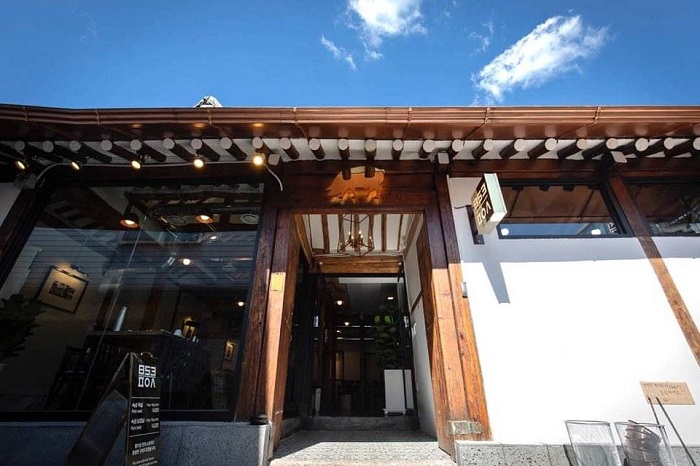
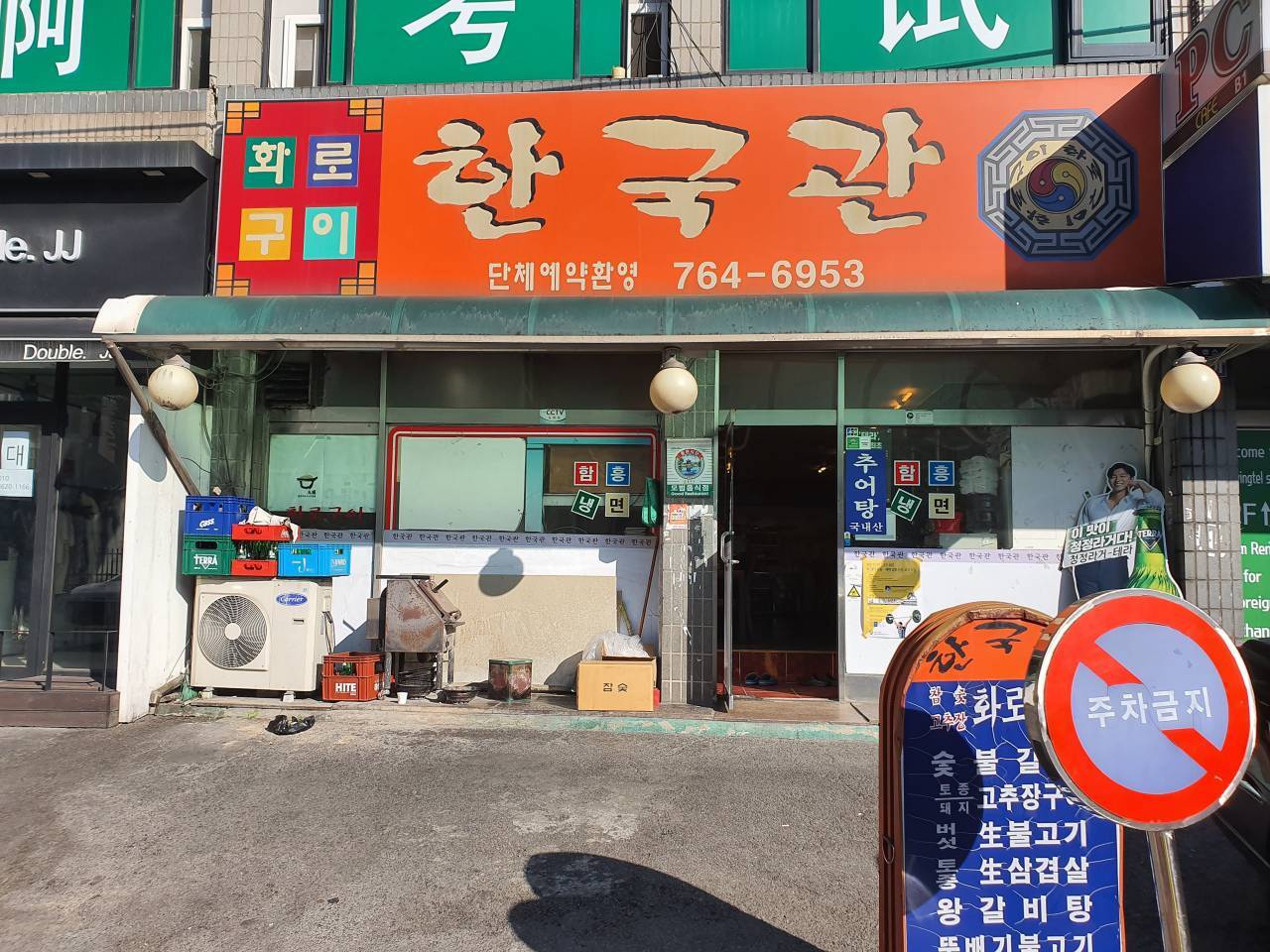
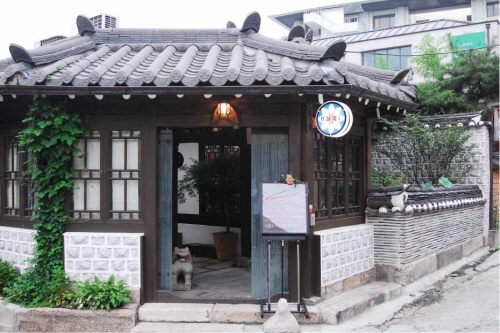
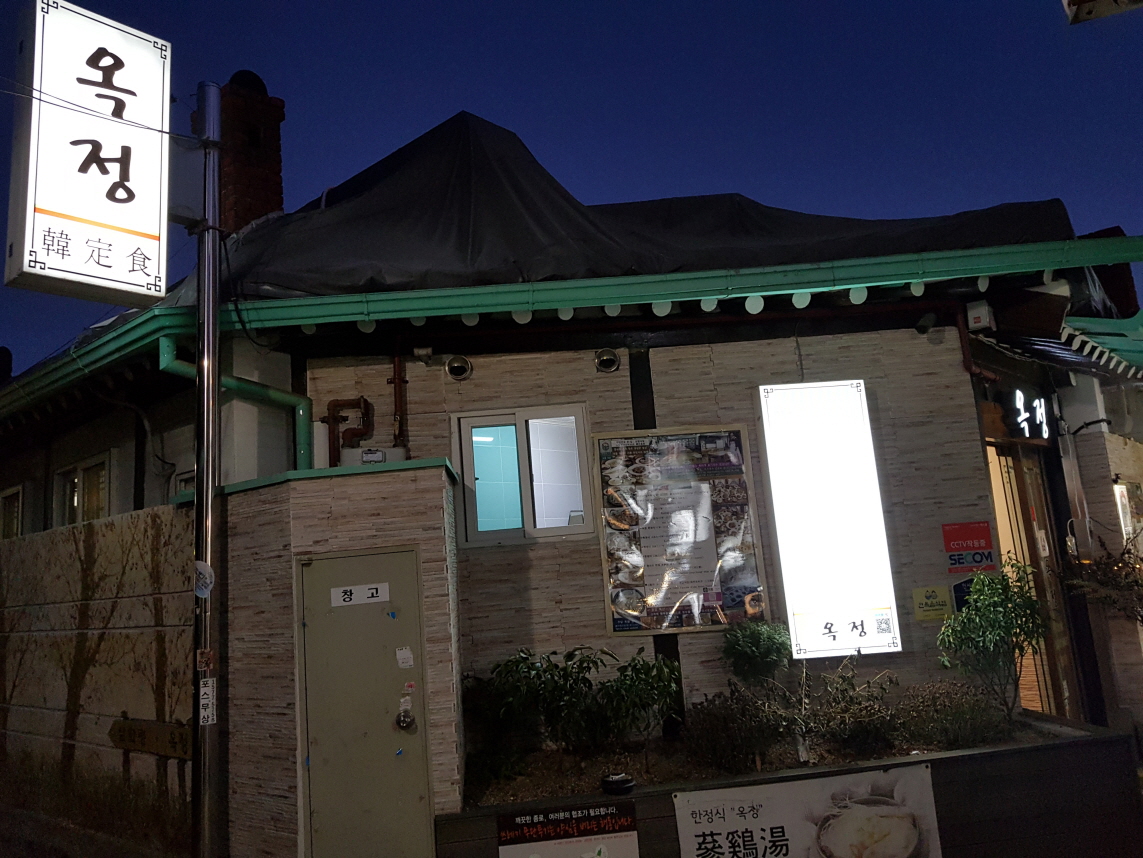
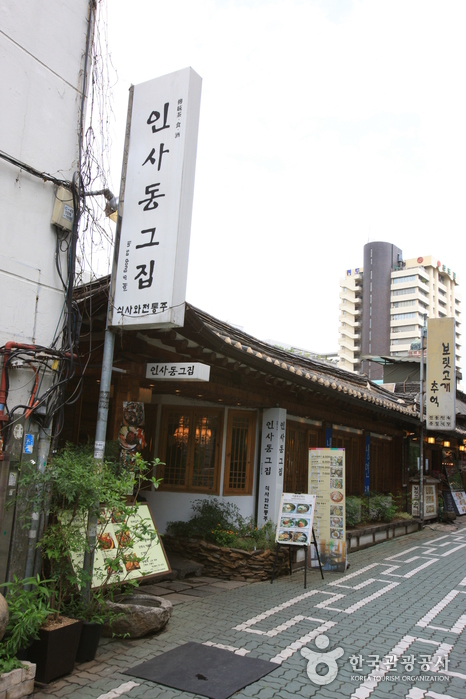
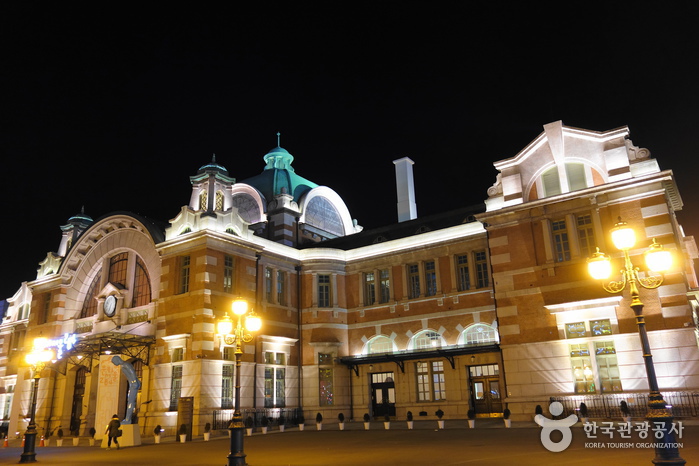
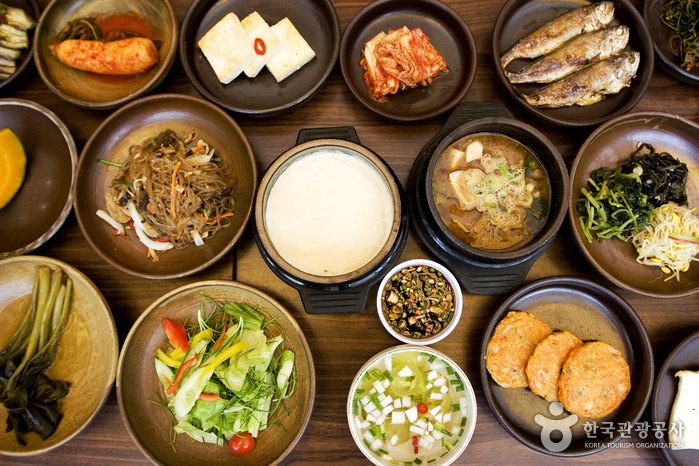
 Français
Français
 한국어
한국어 English
English 日本語
日本語 中文(简体)
中文(简体) Deutsch
Deutsch Español
Español Русский
Русский